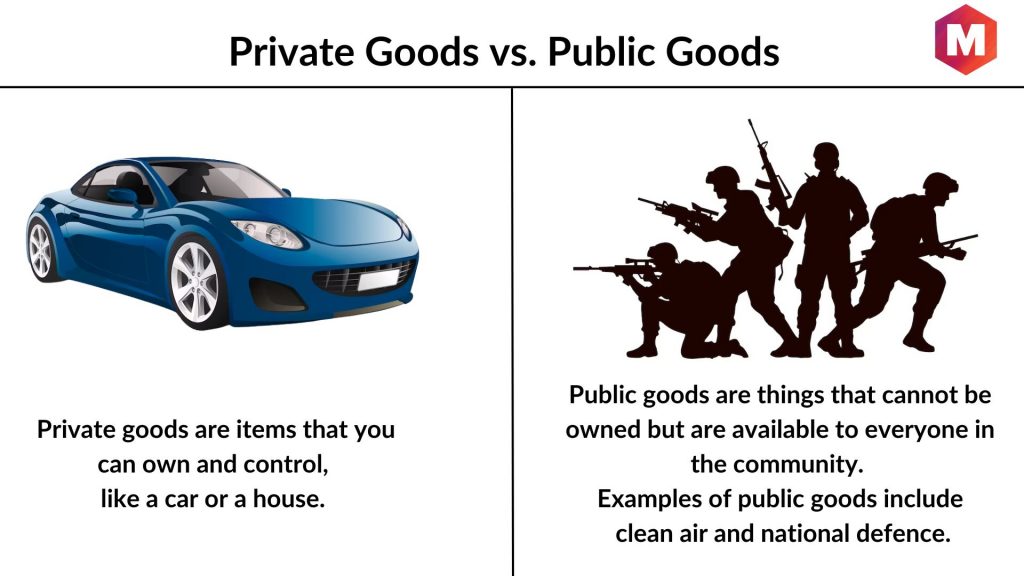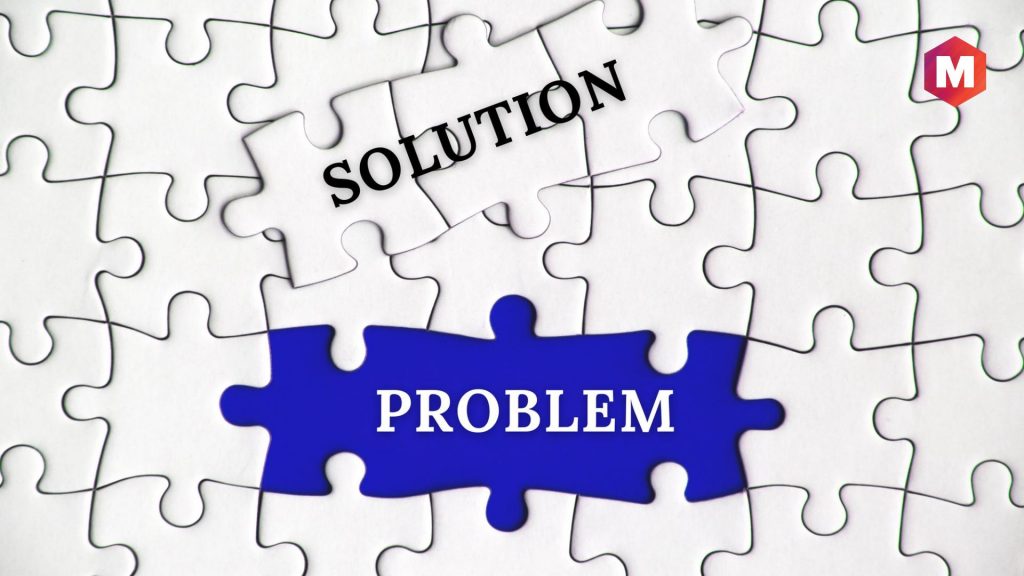Technology creates all sorts of externalities as an outcome of the production process. Some of these might be positive, while some will be negative externalities. The positive externalities add a lot of value to society and the producers of the goods or services.
Almost half of the total social benefit of the newly produced products benefits both society and the investors and producers. Only a scenario where these positive externalities benefit the society at large, but not the private investors revolves around public goods.
Access to clean air, national defense, drinking water availability, the rule of law, sanitation, law enforcement, etc., are examples of public goods. Such commodities or services are offered to all the members of society.
Table of Contents
What are Public Goods?
Defining Public Goods requires an understanding of private goods first.
A normal private good, for example, like a plate of burgers, can be easily bought and sold as an independent and identifiable good. Similar is not the case with Public Goods.
These are the goods produced under the control and administration of a central authority, unlike private producers.
In economic terms, public goods are those that are accessible to all the members of society. These goods are collectively paid for by the taxation system that is in place, adopted by the government.
How Public Goods Work?
Public goods are those that are available to all citizens and non-excludable. Essentially, this means that the good is provided for free to all members of society, and no one can be barred from using it.
Public goods are usually provided by government agencies, nonprofits, or private sector who have decided that providing a public good is in their best interest. Public goods (opposite of private goods or free ride) may be funded with tax dollars as well as donations from individuals or corporations.
There are two main criteria that distinguish a public good: non-rivalrousness and non-excludability. Nonrivalrous means that the goods do not diminish as more people consume them; nonexcludable means that all citizens can consume the public good.
Private Goods vs. Public Goods
Private and public goods are two very different categories of goods. Private goods are items that you can own and control, like a car or a house. Public goods are things that cannot be owned or subtracted by other individual’s consumption, but are available to everyone in the community. Examples of public goods include clean air and national defence.
One way to differentiate between private goods and public goods is by looking at how they’re priced. If something has a market price, then it’s a private good—you can charge people for access (like charging admission to see a movie). But if something lacks a market price, then it’s probably a public good—you can’t charge people for access (like charging admission to see the ocean).
The problem with public goods is that if no one pays for them, then they don’t get produced. If no one buys tickets to see a movie, then it won’t be made. But if someone doesn’t pay taxes, then the government spending will reduce but the government still has to provide services—like national defense or road maintenance—to everyone in its jurisdiction.
Example of Public Goods
An example of a public good would be something like national defense: if one person uses it, it doesn’t mean that another person can’t use it too.
That’s the non-rivalrous aspect—no one can block you from using it just because you don’t pay for it yourself. And since there’s no way to pay for it yourself (you’re paying taxes), there’s no way to exclude people from using it either.
Let’s look at another example of a public good: education. Education is a relatively new concept in human history—it took thousands of years for our ancestors to finally realize that learning things was important! But once we did figure this out, we began teaching our kids how to read and write and do math… even though they were not paying us directly for their education.
Another example in our everyday lives can be parking spaces provided for collective consumption good. If a parking space is provided by the city, it’s obviously public. But even if you own your own parking spot, it’s still a good that benefits everyone who uses it—there’s no way to exclude people from using it.
Two Aspects of Public Goods: Non-rivalrous and Non-excludable
Global public goods are defined with the help of two main characteristics: they are non-rivalrous and non-excludable.
1. Non-Excludability aspects
Non-excludability is the cost of letting the non-payers of tax enjoy the benefit of the good or service being provided. This cost is usually prohibitive. For example, if a fireworks show is scheduled in a colony, people will watch it from their balconies.
In this case, the firework owner cannot charge a fee from those people, and thus even when the demand for the good is high, the benefit to the owner himself is very low.
This throws light on one of the most critical issues concerning the concept of public goods. This is the ‘free-rider’ problem.
Due to the general accessibility to the public good, it is difficult to restrict its use to those who pay for it. Every individual shall try to ride freely to use the good or service based on the people who pay for that good or service.
If not solved, this problem can lead to valuable goods and services being unproduced, as only a small population might be willing to pay for it.
2. Non-Rivalrous aspects
The second aspect of the public good is the idea of ‘non-rivalrous’ consumption attached to it.
Even if the producer or the entrepreneur manages to exclude the free riders from consuming the produced goods or services is unrivaled.
In such cases, if someone enjoys the benefits from a good, it will not reduce benefits for the others. For instance, erecting a dam in an area will protect everyone from the floods.
Deeper Analysis of Public Goods
Non-excludability is usually considered the more important of the two aspects of public goods.
If the good is excludable, private entrepreneurs will try to serve as many fee-paying customers as possible, charging lower prices to some customers if need be. This implies that if one person who is non-excludable uses the good or service, other people will similarly have access to it.
A lot of government provision can be potential examples of public goods. There are people in a society or a setting that pays taxes regularly, fire control, police service, or national defense. But it would be difficult for the authorities to protect only those people from a potential threat to their security like a fire breakout or a burglary.
A protection drive shall undoubtedly be aiming at protecting all individuals, irrespective of the tax payment.
Positive externalities are very closely linked to the idea of public goods. These goods and services have a huge positive externality on society at large, like police protection.
However, all goods and services that produce positive externality might not compulsorily be a public good. The government’s investment in education facilities in the country has tremendous positive effects on society’s general fabric. Although private companies invest in these societal causes, it might be a marginal benefit to cater to all the individuals collectively.
Solutions to the Problems of Public Goods
One of the most viable and potential solutions to the problem arising out of public goods and their consumption is the inculcation of ‘reciprocity motive.’ It is extremely useful, especially in smaller groups of people. Reciprocity in the sense that, developing to contribute to a cooperative individual or an agency aiming at public welfare and wants to implant goodness in the society.
Another potential solution to these problems can be that of defining clearly what property rights are or by government intervention. For example, an activity aimed at collective good like cleaning a polluted river can include a free-rider problem if there is a single lake owner. In the case of a single owner, he can charge a fee from fishermen, boaters, or people using it for recreation and other lake beneficiaries.
Contractual Agreements are also used as a potential solution to public goods’ problems and the externalities they create. The free-rider issues that come with it can be solved by having these contractual agreements in place.
For example, a firm might take up research and development activities for a particular good or service. If that practice benefits the other industries or firms in a similar niche, the host firm can pool resources from them and ask them to join the project in the form of an agreement. Here, every firm shall play its part and bear its cost and share the benefits of the research in the end.
Final Words!
All in all, the imperfections and flaws that come with public-goods should be studied with the government’s fallacies and its functioning.
The government usually has a weak incentive to provide services to the citizens who are generally the consumers of these public goods. The production is thus inefficient but can be corrected if responsibility is realized on both ends.
What are your thoughts about the role of government and firms in channelizing public goods?
Liked this post? Check out the complete series on Marketing


